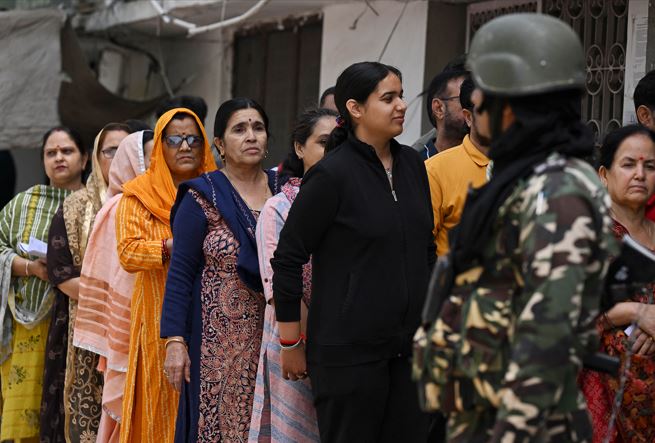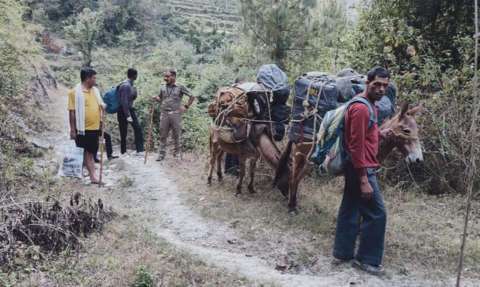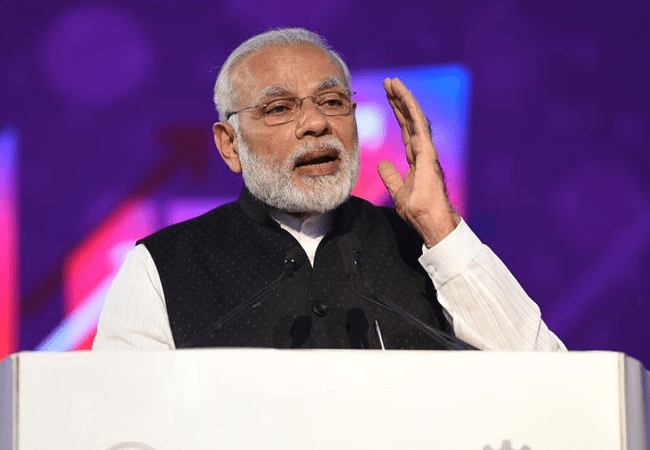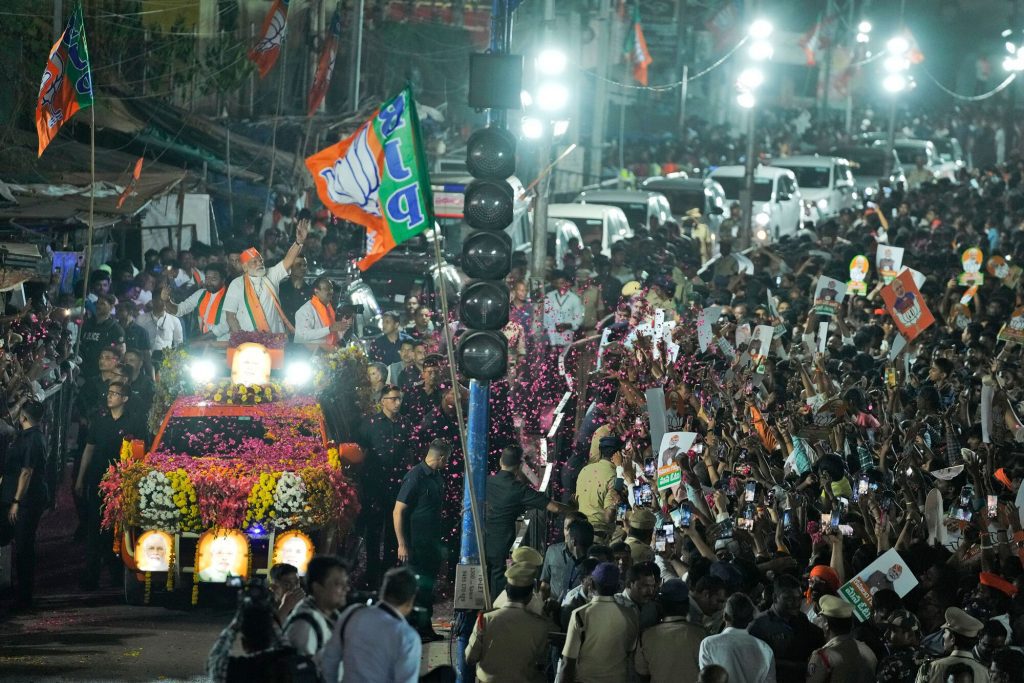India, which has 968 million registered voters, will vote for 47 days. This is considered the biggest election in the world by Western media.
India's six-week election began on Friday, and Prime Minister Narendra Modi of the Hindu nationalist party is expected to win.
Since India is a democracy, every eligible voter in the country’s 28 states and eight union territories can vote.
The election is being documented as the biggest democratic exercise ever.
India, the most populous country, starts a large electoral process that will last over a month and a half, needing careful logistical planning.
Smaller states and territories under federal government have one-day voting, while larger states have voting spread over two or four days.
In states like West Bengal, Uttar Pradesh, and Bihar with very large populations, voting happens in seven phases.
The voting started on Friday with the first phase deciding 102 out of 543 seats in India’s lower house of Parliament, the Lok Sabha, with the rest to follow.
India has 36 states and territories governed by the federal government, each with unique voting dynamics.
- Who can vote?
India has a huge electorate with about 968 million people who are going to vote, which is six times more than the upcoming United States election.

This historic democratic process will decide the fate of 543 politicians who will be elected to the Lok Sabha, with two additional members nominated, bringing the total strength of the house to 545.
To help with this huge task, there are 1.5 million polling booths and five million electronic voting machines across the country.
In terms of gender, the voter demographic is balanced. There are over 497 million male voters, making up over 51% of the total, and about 471 million female voters, showing a steady increase over the years.
India also has significant participation from its young population, with 18 million first-time voters in the 18–19 age group and 197.4 million in the 20–29 age group.
Based on surveys reported by Forbes, unemployment is one of the main concerns for Indian youth.
In the 2019 general election, 67% of the 945 million eligible voters cast their votes, totaling nearly 615 million voters, a record-breaking turnout.
Because of the large scale of this democratic exercise, India spends a lot on elections, with over $8 billion reportedly spent in 2019 and an even larger expenditure expected this time.
- Every vote matters
The election commission in India has made the statement “every voter counts” more than just a catchphrase.
Officials use helicopters, boats, horses, elephants, and mules to reach the most inaccessible areas.
To ensure that a 39-year-old woman from the northeastern state of Arunachal Pradesh could cast her ballot in the 2019 general election, five poll officials endured two days of bus and foot travel.

India’s voter turnout is quite impressive when compared to that of many advanced democracies.
Experts suggest that a significant increase in voter participation is often seen as a sign of confidence in the political process and a yearning for a change in government.
Research conducted in India and the United States has also found a correlation between high voter turnout and sentiment against the current ruling party, the BBC reports.
- Who are the competitors?
There were over eight thousand contenders for the 2019 election. A total of over 2,700 political parties will vie for representation in the Lok Sabha this year.
This election holds significant importance for Prime Minister Narendra Modi. He and his Bharatiya Janata Party are seeking a third consecutive five-year term in power.

If he is elected as PM again, he will match the record of Jawaharlal Nehru, India’s inaugural prime minister.
As reported by the BBC, over the past decade of Modi’s leadership, India’s economy has made a remarkable transformation.
It has moved from being categorised as part of the “fragile five” to now being recognised as one of the top five economies in the world.
The country’s economy is surpassing that of many other nations.
The government is investing $100bn annually to revamp the deteriorating infrastructure, focusing on road, rail, and port construction.
Companies like Apple and Tesla are considering the country as a potential alternative to China, as part of their global diversification strategy.
Heir to a political dynasty Rahul Gandhi is widely recognized as the prominent figure of the Congress party and the face of the opposition.
The Congress party has historically held significant influence in Indian politics. Despite belonging to India’s most prominent political family, he has yet to secure a victory in a national election for his party.
Among the key figures shaping India’s political landscape is Arvind Kejriwal, the charismatic leader of the Aam Aadmi Party and Delhi’s chief minister.
Amit Shah, India’s home minister, is widely recognized for his exceptional political acumen and strategic prowess.
He is not only a trusted confidant of Modi but also renowned for his efficiency in navigating the political landscape.
With a population of more than 1.4 billion, the South Asian nation’s approximately 970 million eligible voters have been reported as impressive.
The electoral process will continue with subsequent voting days scheduled for April 26, May 7, May 13, May 20, May 25, and June 1 following this initial phase.
On June 4, the culmination of this monumental democratic exercise will be marked by the counting of votes, with results anticipated to be announced simultaneously.
As the country waits for the result, the importance of this important event is felt in India and around the world.



